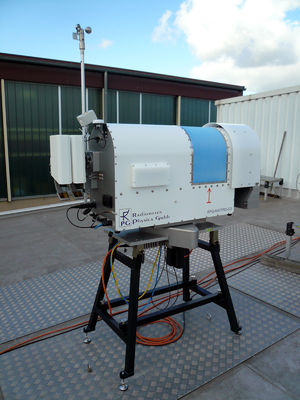Microwave radiometer
Introduction
The microwave spectral range between 1 and 100 GHz offers the unique opportunity to derive a nearly complete picture of the atmospheric state. Water vapour and several other gases as well as water in its liquid form emit microwave radiation making this spectral range particularly interesting to provide information on the cloudy atmosphere from the ground as well as from satellite.
Ground-based microwave radiometer (MWR) measurements of atmospheric thermal emission are useful in a variety of environmental and engineering applications, including meteorological observations and forecasting, communications, astronomy, radio-astronomy, geodesy and long-baseline interferometry, satellite validation, climate, air-sea interaction, and fundamental molecular physics.
One reason for the utility of these measurements is that with careful design, microwave radiometers can be operated in a long-term unattended mode in nearly all weather conditions. An important feature is the nearly continuous observational capability on time scales of seconds to minutes. Westwater et al. (2004; 2005) and Mätzler (2006) provide comprehensive reviews on ground-based microwave radiometry.
More details:
